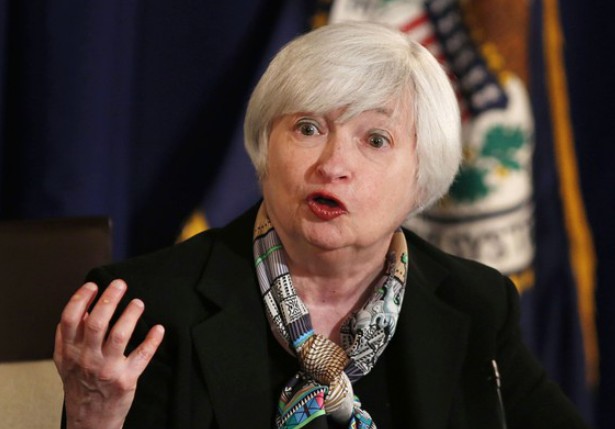It’s anyone’s guess…
On Wednesday, March 18th, the Federal Reserve released an official statement and held a press conference regarding monetary policy and current economic conditions. In this statement, the Fed projected a decline in its inflation expectation, and revised projected GDP growth downward. These are both signs of a slowing economy, not the accelerating economy required to actually raise interest rates. Janet Yellen reiterated, as she has since October, that the decision to raise rates is entirely data dependent, and not at all based on a specific calendar date. When labor market conditions improve and inflation reaches the targeted 2%, the Fed at that time would consider raising rates. The FOMC’s projections estimate that labor market conditions will improve further to 4.9% unemployment and inflation will edge upward to two percent in the years 2016 and 2017. The inherent difficulty with accepting the future estimate on inflation is the fact that the projection of inflation is an outlier to the trend being established by the incoming data. Consumer Price Index (CPI) Inflation, including food and energy, has been declining since November. The Fed also cut its estimate of PCE inflation from December, for the year 2015. The PCE measure has been falling since October when it was at 1.48%, and current sits at 1.31%. This is a decline of 11% since the Fed finished its bond buying program. The last time PCE was 2% was in March of 2012. If the Fed expects inflation in 2015 to be low, borderline dangerously low by the ideas of some FOMC Board members, then how can the Fed raise rates this year? Especially if raising rates has the effect of lowering inflation even more, then the United States might enter outright deflation. The Federal Reserve has been trying to prevent deflation ever since the financial crisis.
When the Fed put out its statement, it no longer included the word “patient” in regards to when it will raise interest rates. In previous press conferences, Chair Yellen has said that when the Committee elects to remove “patient”, the Fed may begin to raise rates “in a couple of meetings.” During her most recent conference she said that there is no calendar date and markets should not expect a rate hike in necessarily two meetings. Effective the word “patient” was removed, but its meaning in terms of the Fed’s Policy was not. In the Question and Answer portion of the Conference Sam Fleming from the Financial Times asked a question regarding the risks of leaving “zero lower bound” and how tightening too early can have greater risks than remaining in a low interest rate environment. Chari Yellen responded by saying, “When an economy is operating at the so called zero lower bound, it creates a situation where there are asymmetric risks.” She continues, “If there are adverse shocks to demand that tend to push inflation and economic performance in an adverse direction, it’s not possible to lower rates. Of course that’s a reason why for a number of years we engaged in active asset purchase programs.” Yellen pointed out that while at close to zero percent interest rates the Fed’s policy options to further stimulate the economy are limited.
With the dramatic drop in the price of oil, along with thousands of rig layoffs have pulled the energy industry into a large contraction. Combine this with largely negative economic data, paired with the fact that the US is historically due for a recession, and there could be a large problem for the Fed. The Bloomberg ECO Surprise Index, which measures general economic data trends, is at its lowest level since the depths of the recession in 2009. The US economy could very well be starting to roll over into a recession, in which the Federal Reserve’s policy options are limited. According to Janet Yellen’s remarks about past policy decisions in this type of scenario, one would think that if this negative trend continues the possibility of another asset purchasing program could enter into the discussion, postponing today’s talks about raising interest rates even further.
Analysis by Andrew Gehrig
Sources:
“Chair Yellen’s Press Conference.” Federal Reserve. 18 Mar. 2015. Web. 19 Mar.2015.
“Consumer Price Index Summary.” U.S. Bureau of Labor Statistics. U.S. Bureau of Labor Statistics, 26 Feb. 2015. Web. 20 Mar. 2015.
“Dollar Slides as Worst Data Misses Since ’09 Cloud Fed Outlook.” Bloomberg.com. Bloomberg. Web. 20 Mar. 2015.
“Economic Projections of Federal Reserve Board Members and Federal Reserve Bank Presidents.” FederalReserve.gov. Federal Reserve, 18 Mar. 2015. Web.
